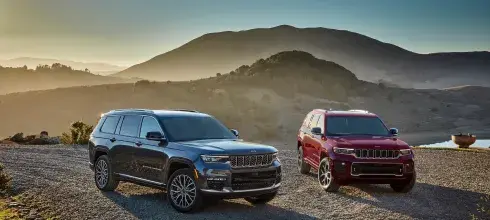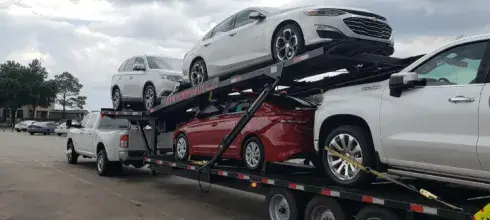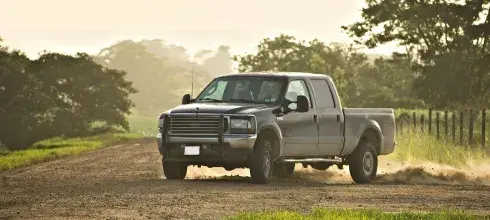
A Guide to Auto Transport Measures in Florida and Across the US
Here at SGT Auto Transport, we take the safety of our customers and their vehicles very seriously. Our top priority is to ensure your vehicle is as safe as possible during transit and that you’re completely satisfied with the auto transport experience.
To put your mind at rest and remove any worries you might have about shipping your car, this guide will examine the auto transport safety measures we put in place. It will also explore the DOT regulations for car haulers that have to be followed to ensure transport safety on the highway.
We have an extensive network of car haulers we can call on when our customers are looking for reliable car transport. All of them have been carefully vetted and we are certain they follow strict protocols and processes to ensure your vehicle arrives safely at its destination.
If you want to know more about how to ship a car and what to look for if you ever need to hire a car shipping company, keep reading.
Safety measures in place to ensure your vehicle is transported safely
Vehicles have been shipped across the United States ever since the first one was invented and sold. However, not all providers of car shipping services are equal.
When you’re looking for a reliable car transport company, check that the following auto transport safety rules are followed before making your booking.
Pick-up and delivery loading inspection
The first thing a car shipping company should do is carefully inspect the vehicle that’s going to be transported. As the owner of the vehicle, you should be present during this inspection, to ensure all dents, dings, scratches, and paint chips are noted on the bill of lading or inspection report.
It’s also advisable to inspect your vehicle yourself, taking pictures of the interior and exterior of your car to ensure its condition is properly documented.
When your vehicle is delivered, another important part of the car transport safety measures is to inspect it again. If you do this, you can be certain that everything is in order.
Should anything be amiss, the inspection documentation is what you use as evidence of mishandling. However, it’s important to stress that damage occurs on exceedingly rare occasions.
Securing your vehicle
When shipping your vehicle, the carrier must ensure that it is completely secure. When vehicles are secure, they are unable to move forward or backward or from side to side during transit.
This is especially important if the roads are less-than-perfect, or the weather is poor. When the vehicles on the transport trailer are properly secure, they will be held in place which minimizes the chances of the vehicle getting damaged, dented, or scratched during the shipping process.
It is common for car shipping companies to use tie-down ratchets or wheel straps to secure the vehicles on the trailer. Watch the carrier when they load your vehicle and make sure they use the right equipment to secure your vehicle.
A car shipping carrier that secures both the front and back of your vehicle as well as tie-downs for the wheels and chassis is happy to go the extra mile when it comes to providing safe auto transport.
Protection of sensitive parts
Every vehicle is different, but most will have sensitive parts and stress points. A reputable car shipping company will be knowledgeable about these and know how to protect them.
A larger and heavier vehicle such as an SUV will require thicker wheel straps or bigger ratchets. The best auto transport company will use equipment that can handle the pressure or extra tension a larger vehicle creates.
Similarly, if a vintage or classic car is being transported, the carrier will recognize this and handle it with exceptional care. Antique cars are more vulnerable to bents, dents, and other damage and may require specialist straps.
Protocols for removable exterior parts
If your vehicle has removal features on the outside such as side-view mirrors, these might easily get dislodged or moved. A good shipping company will look for these and fold them in before loading your car, but it’s advisable to do this yourself.
Other exterior parts that might need extra protection or removal completely include antennas, car roof decors, hood ornaments (car mascots, radiator caps, or motor mascots), and blind spot mirrors.
Securing interior accessories
Your pick-up and delivery inspection should also include the interior of your vehicle. Before your vehicle is loaded, you should ensure that any items or accessories that might move about are removed. It’s possible that these could cause internal damage during transportation.
These interior items include seat covers, air fresheners, cell phone holders or mounts, pillows, wobblers, nodders, bobblehead dolls, car seat organizers, cable clips or organizers, stuffed toys, coffee cup or drink holders, stick-on window shades, jacket or bag hooks, and rearview mirror danglers.
A general rule of thumb is that you should remove everything removable from the car. This includes personal belongings that are at risk of being stolen or lost. You’ll find that some carriers do not hold themselves liable for such losses.
It’s always best to read your auto transport carefully and make sure you understand the finer points. If you’re unsure about anything, clarify it with the company and ask them to explain.
When your vehicle is being loaded, stand well back
Our vehicles are very precious to us and while it might be very tempting to be on the auto transport driver's shoulder, it’s best to stand well back.
They are, after all, expert on how to load your vehicle safely, whether it’s an open trailer, a flatbed truck, or an enclosed trailer.
Don’t stand directly behind or in front of the vehicle just in case something should go wrong. It would take just a fraction of a second for the weight and momentum of the vehicle to cause serious bodily harm if it were to run into you with any kind of force.
For safety reasons, it’s recommended that you stand at least five feet away from the vehicle that’s being loaded or unloaded.
Inform your carrier of any issues with your vehicle
If you know of any issues your vehicle has it’s always best to be honest and upfront when you make your booking. That way the carrier can ensure they’re properly prepared.
Issues that might also put the driver and your car at risk include:
- Mechanical issues
- Brake issues
- Leakage issues
- Electrical issues
If you know that your car has a gas leak, this could be extremely dangerous during the transportation process. Let’s not forget that gas leaks are one of the main causes of all vehicle fires.
Auto transport rules and regulations
Auto transport operators must comply with lots of transportation safety regulations. These rules and regulations are what keep US highways and roadways safe. They are typically set by federal, state, and local government agencies. Car shipping companies must ensure their routes, trucks, and drivers meet all applicable rules.
One of the most important is the specific rule on resting. They are called the hours-of-service regulations, and it is the FMCSA that sets them. These rules ensure every driver gets the rest they need to keep themselves and other road users safe.
Additional FMCSA rules ensure drivers follow the rules of the road, that vehicles meet various safety standards, companies follow environmental guidelines, and many more.
Any operators who fail to follow the guidelines, face fines, penalties, or other consequences.
If you’re feeling more confident about the safety aspect of shipping a car, why not get in touch and find out how much it will cost?
Give us a call at (864) 546-5038 or use our Live Chat option.
Get a Free Instant Quote Today!
FAQs
How can I protect my car during transport?
Some of the ways you can protect your car during transport include:
- Make sure the carrier secures your vehicle once it’s been loaded
- Removing all personal and removable items and after-market accessories
- Paying attention during the inspection part of the process
- Getting to know the driver
Is shipping a car risky?
Shipping your car is generally a safe thing to do. Vehicle damage can happen, but it is extremely rare. You can minimize the risk by choosing a reputable car shipping company.
Do you tip an auto transport driver?
Tipping isn’t required and it’s also not included in the price of car transport. However, it’s a kind gesture and the money goes directly to the driver. And why wouldn’t you give them a tip for a job well done?
How do I protect my car from a trailer?
You can protect your car by ensuring all removable items have been taken off your vehicle.
Should I put a cover on my car?
Car carriers tend not to allow the use of car covers during the transportation process. The reason for this is that there is no reliable way to keep your cover secured on your car while it’s in transit. When a truck is traveling down the road there is a terrific amount of wind force. No cover is a match for such a force. Even if the wind doesn’t rip the cover off, it will likely rip the cover itself.







